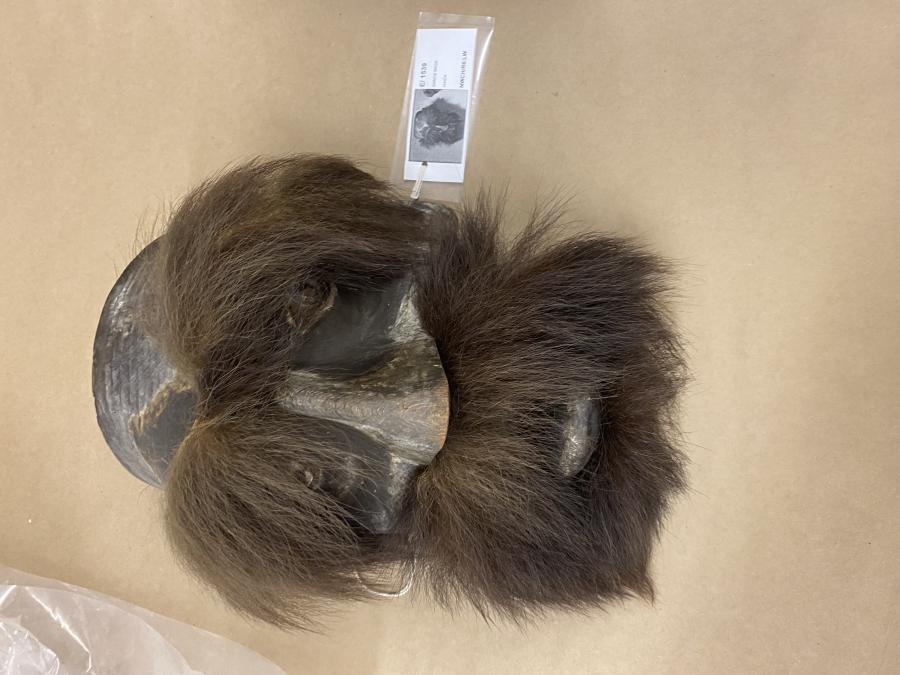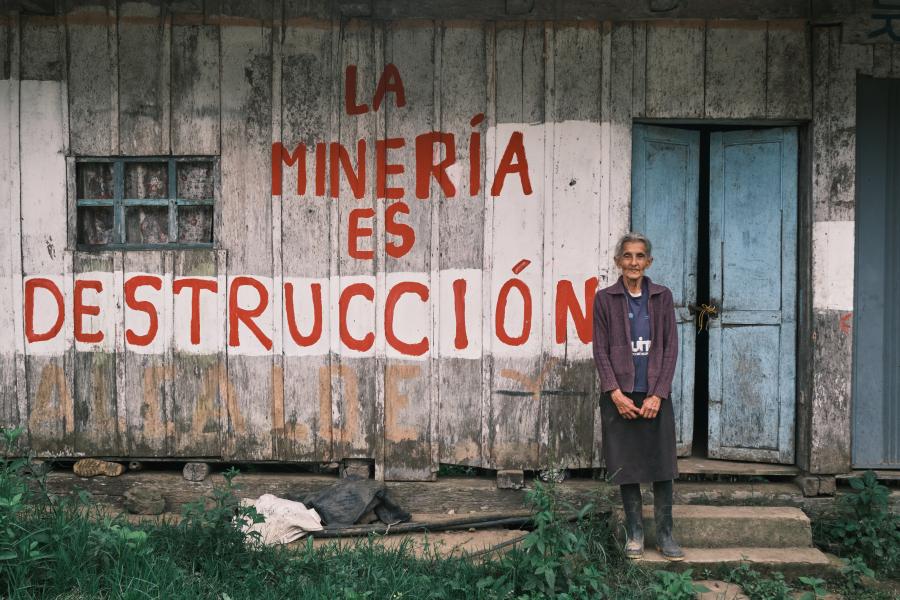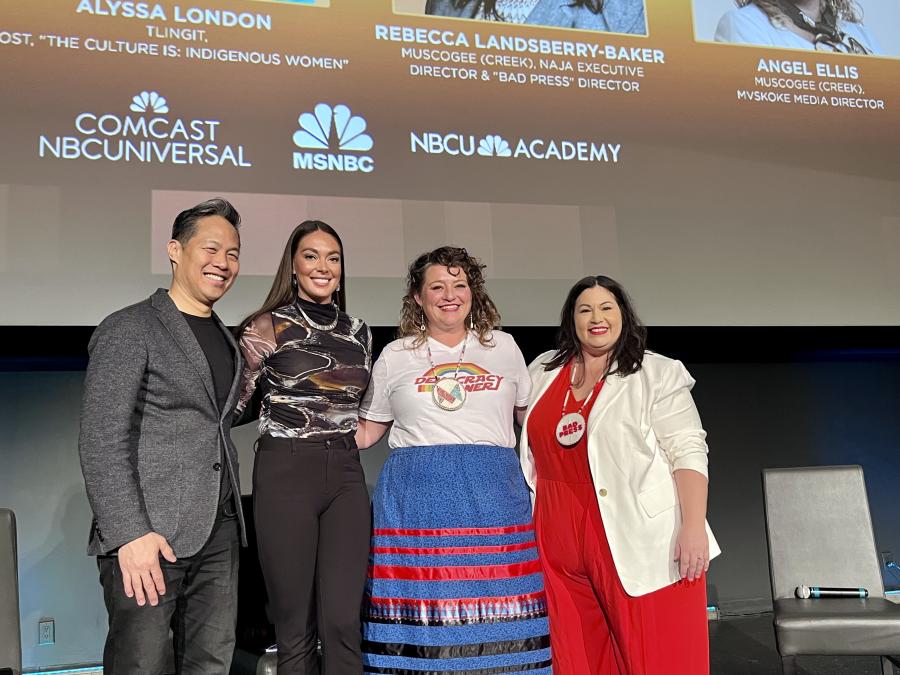
Cultural Survival joins in calls for action to implement recommendations of Canada’s Truth and Reconciliation Commission
Recent investigations in Canada led by the Tk'emlúps te Secwépemc First Nation and Cowessess First Nation have uncovered the bodies of 215 and 751 Indigenous children victims of State-sanctioned Catholic residential schools in unmarked graves on the former properties of the Kamloops Residential School in British Columbia and the Marieval Indian Residential School in Saskatchewan. These numbers add to hundreds of other graves that have been uncovered at additional schools.
Canada’s Truth and Reconciliation Commission (TRC) concluded in 2015 that residential schools amounted to “cultural genocide” of First Nations Peoples. Residential schools existed in Canada between the 1870s and 1996, when the last school closed; in the 150 years of their existence, an estimated 150,000 Indigenous children were sent to the schools, often against the wishes of their parents. According to the TRC, “these government-funded, church-run schools were set up to eliminate parental involvement in the intellectual, cultural, and spiritual development of Aboriginal children” and many students were “forbidden to speak their language and practice their own culture.” The report establishes that "these measures were part of a coherent policy to eliminate Aboriginal people as distinct peoples and to assimilate them into the Canadian mainstream against their will…because [the government] wished to divest itself of its legal and financial obligations to aboriginal people and gain control over their land and resources.”
Over its 6 years of operation, the TRC heard testimony from more than 6,700 former students about the abuse they faced in the schools and the lasting impacts that the experience has had on their lives and on their communities. The TRC has confirmed 4,100 student deaths in the schools which resulted from abuse, negligence, lack of medical care, and suicide, but they estimate that at least 6,000 children died in the schools.
Chief Wilton Littlechild (Cree) was one of three commissioners in charge of Canada’s Truth and Reconciliation Commission and is himself a survivor of residential schools. Cultural Survival Quarterly published this powerful interview with Chief Littlechild in 2011 about his experiences, the trauma he faced and how he continues to work to overcome it, and his hopes for reconciliation. “This story is not an Indigenous or an Aboriginal story, it’s actually Canada’s story. The challenge we have is having Canada become engaged fully with the story. That’s when you are going to see reconciliation happen fully,” he stated in 2011.
Chief Littlechild continued, “Indigenous people talking amongst each other about all our bad experiences, that doesn’t work. It’s got an important purpose in terms of the healing journey, but it won’t solve the bigger picture in terms of where we need to go. Private industry also needs to become fully engaged in the discussion, and we are in fact looking into ways to achieve reconciliation through economic development. And of course the schools. Education is the key. Remember, students across Canada were sent to learn that we are inferior, that we’re no good. In a classroom so much could be done in terms of the journey of reconciliation. I’ve met with several trustees, school districts, and other members of public education, encouraging them to open up their curriculum so that residential school history can be taught in the schools. Not just Indigenous schools: more so in the non-Indigenous schools.”
At its conclusion in 2015, the TRC released a wide-reaching list of 94 Calls to Action for reconciliation, including urging all levels of government — federal, provincial, territorial and Aboriginal — to work together to change policies and programs in a concerted effort to repair the harm caused by residential schools and move forward with reconciliation. The "calls to action" are divided into two parts: legacy (1 to 42) and reconciliation (43 to 94). In one of its recommendations, the TRC pressed the federal government to develop a program for the identification and protection of residential school cemeteries.
In 2017, Canada was criticized at the UN for failing to implement these Truth Commission recommendations. The UN Committee for the Elimination of Racial Discrimination urged for the development of “a concrete action plan” to implement the TRC’s 94 Calls to Action and the UN Declaration on the Rights of Indigenous Peoples (UNDRIP) in coordination with Indigenous Peoples, along with establishing a monitoring and evaluation process once these measures are implemented.
Residential schools were not unique to Canada. In the United States, the government operated as many as 100 boarding schools for American Indians, both on and off reservations, for over a century between 1877-1978. A US federal policy to assimilate Indians into mainstream society, the Indian boarding school’s explicit goal was to “kill the Indian and save the man,” by taking American Indian children from their homes, cutting their hair, and forcing them to speak only English. Many American Indian children in boarding schools suffered physical, emotional, and sexual abuse as a result of practicing their culture and speaking their language behind closed doors. This erasure tactic of punishing young children was designed to both forcefully assimilate American Indian people, but also an intentional practice of cultural genocide. Many Indigenous Peoples continue to experience historical, familial, and intergenerational trauma because of the abuse endured from their parents and grandparents who were separated from their relatives and forced into boarding schools. The film Dawnland chronicles a Truth and Reconciliation Commission on residential schools that operated in the state of Maine and how it continues to affect Native communities there today.
On June 22, 2021, Secretary of the Interior Deb Haaland announced a Federal Indian Boarding School Initiative, a comprehensive review of the troubled legacy of federal boarding school policies in the U.S.
Although most residential schools were officially closed by the late 1990s, the separation of Indigenous children from their families continues to be an ongoing issue, in both the United States and Canada. This is true at the U.S. border and in the policies of child welfare programs. When residential schools closed in Canada, the care of Indigenous children was handed over to Child and Family Services departments under the provincial governments. Today in Manitoba, Indigenous children are 12 times more likely to be removed from their families and placed into foster care or group homes than non-Indigenous children. The province of Manitoba alone reports that 11,000 children are currently under their care, 85 percent of whom are Indigenous.
After residential schools were closed in the U.S., the 1978 Indian Child Welfare Act was signed into federal law to protect Native American children from removal from their Tribal communities in cases of foster care placement or adoption. However, this act has repeatedly and recently faced legal attacks in the courts, with arguments that deny Tribal sovereignty over their children.
However, Indigenous communities in Canada, despite generations of historical trauma, are protagonists of change and resilience. Cora Morgan (Turtle clan of the Sagkeeng Anishnaabe First Nation) works as a Family Advocate for the Assembly of Manitoba Chiefs. She shared a Cheyenne proverb that inspires her and brings her hope: A nation is not conquered until the hearts of its women are on the ground. And the hearts of the Anishnaabe women are not on the ground. In 2016, Cultural Survival profiled her work, alongside other mothers in her community, implementing healing programs aimed to keep Indigenous children in Indigenous families.
Andrea Landry (Anishinaabe) is a mother, professor, therapist, and Indigenous rights defender. Coming from a family who survived residential schools in Canada, she now teaches others how to move beyond cycles of trauma rooted in colonial pain in their paths forward as Indigenous parents, as she writes in her essay, “The Radical Healing Power of Indigenous Love”.
Patricia Dawn (Métis Cree) founded the Red Willow Womyn’s Society, helping Indigenous women in British Columbia’s Cowichan Valley at risk of having their children apprehended by the Ministry of Children and Family Development. Cultural Survival’s Keepers of the Earth Fund made a grant to support their work in 2018 to address the cycle of child removal.
Cultural Survival joins First Nations in Canada in mourning the deaths and abuse of generations of Indigenous children at residential schools. We join in calls for action — the implementation of all 94 recommendations from the Truth and Reconciliation Commission, and the operationalization of the UN Declaration on the Rights of Indigenous Peoples in Canada, particularly Article 7, which states: “Indigenous Peoples have the collective right to live in freedom, peace and security as distinct peoples and shall not be subjected to any act of genocide or any other act of violence, including forcibly removing children of the group to another group.”
Cultural Survival also joins in the calls asking Pope Francis to issue an official apology on behalf of the Catholic Church as well as to commit funds for justice, reconciliation, and healing initiatives.
A Canadian National Indian Residential School Crisis Line has been set up to provide support for former students and those affected. Access emotional and crisis referral services by calling the 24-hour national crisis line: 1-866-925-4419.
Photo by Ted McGrath. Vancouver - Kamloops Indian Residential School Memorial.



